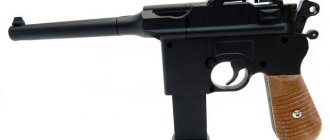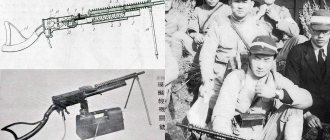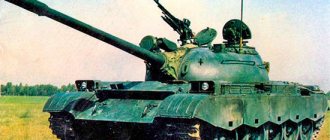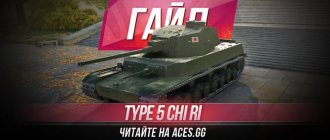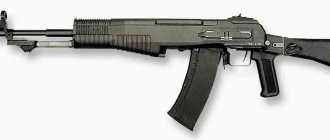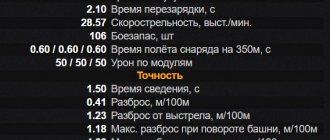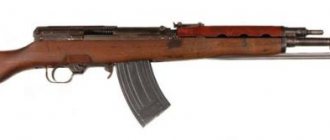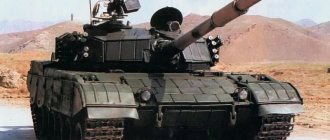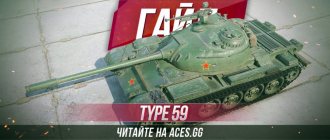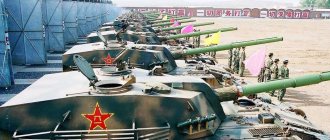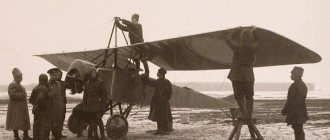Construction[edit]
This weapon has an automatic design, unusual for submachine guns, with the removal of part of the powder gases from the barrel bore and the barrel being locked by turning the bolt. The design of the bolt group has significant similarities with this unit of the Type 56 assault rifle, which in turn is a copy of the Soviet AK-47. However, in the Type 79 submachine gun the gas piston is not part of the bolt carrier and operates with a short stroke. The trigger mechanism is no different from the AK design. The translator-fuse also copies the corresponding assembly of a Kalashnikov assault rifle. The barrel is open and not protected by a perforated casing, as is usually done in submachine guns to protect the shooter’s hands from burns during prolonged shooting. The receiver is stamped from sheet steel, as is the metal stock, which folds up and down. Pistol fire control handle made of plastic. The magazine neck also serves as the front handle for holding the weapon. The weapon is fed with cartridges from box magazines with a double-row, staggered arrangement of twenty rounds.
Tanks of the Celestial Empire
In a short period, China has gone from being a buyer to a manufacturer and exporter of armored vehicles.
Armored combat vehicles appeared on Chinese territory in the first half of the 20th century. In a series of civil wars and interventions that succeeded each other, tanks played a far from central role, nevertheless, significant attention was paid to this weapon. In the 50s, the country's leadership decided to switch from purchasing armored vehicles to their production. Successes in this area allowed China already in the 80s not only to meet its own needs, but also to supply its products abroad.
Tanks appeared in China in the 20s of the last century, when the Manchu dujun (military governor) Zhang Zuoling acquired 36 FT-17 light tanks from France. The first 10 tanks were sent on a British ship under the guise of agricultural tractors. Four more arrived in November 1925 at the port of New Chang. They were used in the struggle between the Manchurian army and the army of the Dujun Wu Pei-fu.
Meanwhile, the Nanjing Kuomintang government decided to purchase tanks for its army. In 1929 it ordered 24 Vickers Carden Loyd wedges and the first 12 arrived in China in May. They were sent to Suzhou and fought on the Longhai Front. In 1938, purchases of armored vehicles became more widespread. Through the German military mission, 10 Pz light tanks were acquired. I Ausf. A and 30 armored vehicles. In Italy, 20 CV 33 tankettes were purchased, and in the UK, 16 Vickers Mk tanks were purchased from Vickers. E, and then in addition to them four more tanks, but equipped with radio stations - Vickers Mk. F. Together with Vickers Mk. E 33 Vickers Carden Loyd Model 1931 amphibious tanks also arrived in China.
Foreign aid
On March 1, 1938, a trade agreement was signed between the USSR and the government of Chiang Kai-shek. The Soviet government provided China with a cash loan to purchase military and other materials from the Soviet Union. Among those purchased were 87 T-26 tanks of the 1933 model. At the end of the 30s, during heavy battles with the Japanese, all this military equipment was mostly lost.
The revival of Chinese armored forces began only in 1943, when the United States decided to form a Provisional Tank Group from the remnants of Chinese armored forces in India. Initially, it included American tank crews, but over time they were replaced by the Chinese. The Americans took upon themselves full technical support of the newly formed unit. The group was armed with US-made tanks taken from British stocks in India. The Provisional Tank Group was armed primarily with M4A4 Sherman medium tanks and M3A3 Stuart light tanks, as well as a small number of British Bren Carrier armored personnel carriers and American half-track armored personnel carriers. The group took an active part in the fighting against the Japanese in Burma in 1944. The Provisional Tank Group later became the core of Chiang Kai-shek's armed forces that fought Mao Zedong's Communists during the Chinese Civil War from 1946–1949. By the way, the People's Liberation Army of China, led by Mao Zedong, received from the Soviet Union all the Japanese armored vehicles captured from the Kwantung Army in 1945. After the victory of the Communists in the civil war and the formation of the People's Republic of China, supplies of Soviet-made armored vehicles - T-34-85 and IS-2 tanks - began from the USSR. China began independent production of armored vehicles in the second half of the 50s.
The firstborn of Chinese tank building
The first Chinese tank was the medium Ture 59 (WZ120). It has been produced since 1957 at state plant No. 617 in the city of Baotou (Inner Mongolia province) according to Soviet technical documentation. Later, production was expanded to two more factories in Inner Mongolia and Shanghai. Its production volumes were 500–700 units per year in the early 70s, 1000 in 1979, 500 in 1980, 600 in 1981, 1200 in 1982, 1500 in 1983. -1700 units. The Ture 59 is identical in design to the Soviet T-54A tank. Serial production was carried out from 1957 to 1987 (after 1980 - mainly for export). During this time, about 10 thousand units were manufactured.
The layout of the tank is classic with a front control compartment, a middle combat compartment and a rear engine and transmission compartment. The driver is located in front on the left, the gunner and commander sit in the turret to the left of the gun, and the loader is on the right. The tank hull is welded, the turret is cast hemispherical with a welded roof.
The turret is equipped with a 100-mm rifled gun “59” (licensed Soviet D-10TG), stabilized in the vertical plane. It has an ejector for purging the barrel bore after a shot. Vertical guidance angles range from -40 to +170. To fire the cannon, a telescopic articulated sight with variable 3.5- and 7-fold magnification is used, which is a copy of the Soviet TSh-2A-22. The ammunition consists of 34 unitary rounds, 20 of which are located in the rack to the right of the driver’s seat, and 14 in the fighting compartment. All ammunition is a copy of Soviet 100 mm unitary rounds. To the right of the gun is a 7.62-mm “59T” machine gun (a licensed copy of the Soviet SGMT), and another similar machine gun is rigidly mounted in the front plate of the hull. On the roof of the turret, on the loader's hatch turret, there is a 12.7-mm anti-aircraft machine gun "54" - a copy of the DShKM.
The tank's mechanical equipment contains a 12150L diesel engine with a power of 520 horsepower - a copy of the Soviet B-54. The mechanical transmission is also completely identical in design to that installed on the T-54A tank. The chassis for one side includes five road wheels, drive and idler wheels. Individual torsion bar suspension. The tracks of the Ture 59 tank were borrowed not from the T-54A, but from the T-55 - they are lighter and more technologically advanced in production.
The first production version was produced from 1957 to 1961. The Tour 59-I (WZ120A) modification that replaced it was equipped with a two-plane weapons stabilizer and active night vision devices. The ammunition load of the "69-II" gun (analogous to the Soviet D-10T2S) includes a feathered AP100-2 armor-piercing sub-caliber projectile with an elongated core, developed by NORINCO (North Industries Corporation). In the early 80s, rubber-fabric side screens, smoke grenade launchers, laser rangefinders Toure 82 and Toure 83-II from the Chinese company CELEC and a simple analog ballistic computer began to be installed. All necessary data was entered into the computer manually using a push-button control panel. The laser rangefinder was mounted on the gun mantlet above the gun barrel. All Toure 59 tanks in service with the PLA were upgraded to the “59-I” level.
The Ture 59-II (WZ120B) tanks had their armament changed, installing a 105 mm Type 81 rifled gun with a heat-insulating cover. This gun is a copy of the Israeli-made American M68 tank gun. It has a significant advantage in shooting accuracy and shot power over a 100 mm cannon. The embrasure of the turret and the layout of the internal equipment, as well as the similar weight and size characteristics of the gun, made it possible to install it in the tank without significant alterations. The weapon stabilizer remained the same as on the 59-I. For the new gun, NORINCO has created feathered BPS with increased armor penetration. A 105 mm BPS with a uranium alloy core is capable of penetrating 150 mm thick armor at a range of 2500 meters at an angle of 60°. The tank's ammunition includes high-explosive and cumulative shells produced using Israeli technology. The ammunition load, like that of the 59-I, consists of 44 rounds. In 1984, the gun was equipped with a heat-insulating cover made of aluminum alloy. The tank received five-section rubber-fabric screens, a laser rangefinder in the commander's cupola, and non-illuminated night vision devices supplied to China by the English company MEL. This modification received the index Type 59-IIA.
Deep modernization
In an effort to maintain the combat effectiveness of the Tour 59 tanks at an acceptable level, China carried out a deep modernization of the Tour 59-II tanks, aimed at increasing survivability by equipping them with dynamic protection and increasing combat effectiveness by installing an improved fire control system and other related elements. In terms of its combat characteristics, the tank, designated Type 59-IID (WZ120C), roughly corresponds to the Russian T-55AMV. Dynamic protection (designated as FY) of the “59D” tank consists of box-shaped containers with plastic explosives, which are installed on the upper frontal part of the hull (13 pieces) and on the cheekbones of the turret (15 pieces each, three of which are triangular in shape). A new 105 mm "83A" gun was installed. The control system includes new combined (day/night) passive sights for the commander and gunner, an auxiliary telescopic sight, a built-in laser rangefinder, an improved two-plane weapon stabilizer, and a digital ballistic computer. Instead of the gunner's periscope sight, a thermal imager can also be installed. There are four smoke grenade launchers on the sides of the turret, and in its rear part there is a basket for crew property. The tank is equipped with thermal smoke equipment (TDA). The MTO is equipped with a 12-cylinder diesel engine 12150L7 boosted to 580 horsepower (by increasing the fuel supply and compression ratio). Speed on the highway is 50 kilometers per hour, off-road - up to 25, power reserve - 440 kilometers, with additional tanks - up to 600. The caterpillar uses a rubber-metal joint, and the torsion bar shafts are reinforced. A new A-220A radio station with a range of 16 kilometers was installed. Type 59-IID1 (WZ120C1) tanks are armed with a 105 mm "79" gun with an aluminum-composite heat-insulating casing. It is possible to use ATGMs with a maximum firing range of up to 5.2 kilometers and armor penetration of up to 700 millimeters. The ATGM fires through the gun barrel, just like on Russian tanks. In addition to standard ground targets, the missile can hit low-flying helicopters. It is possible that the development of tank guided missiles is carried out jointly with Israel. Demonstration tests of such ATGMs have already been carried out, and a remote-controlled self-propelled target was hit at a distance of 4.8 kilometers. The purchase of Russian-made 9M117 Bastion tank missiles is also possible.
At the end of the 60s, NORINCO developed the main battle tank Toure 69 (WZ121). It was a modernized version of the Toure 59. It was planned to use only Chinese technologies and components. In the early 70s, plant No. 617 in Baotou began serial production of new tanks. However, its development was slow and production was carried out in limited quantities until the 80s. The tank was first shown at a military parade in Shanghai in September 1982.
Export version
Ture 69 tanks were produced mainly for export. Relatively few combat vehicles entered service with the PLA. The first foreign customer was Iraq, which purchased several hundred tanks starting in 1983. And in total, according to various estimates, from 1800 to 2500 units of this type were delivered to the Persian Gulf countries over the course of three years (1984–1987), most of which were supplied to Iraq. At the beginning of 1987, Thailand ordered the PRC a large batch of military equipment, including 50 Tour 69. The first vehicles were delivered to the Royal Thai Army already in 1988, and they received the local designation Type 30 MW. A certain amount has arrived in Sri Lanka. In 1998, 232 tanks arrived in Bangladesh.
| Al-Bashier is the Sudanese designation for Chinese Type 85-IIM tanks. Source: militaryphotos.net |
Pakistan also purchased 250 Tour 69s in the 80s, and in 1993 began licensed production of them at the Heavy Industries Taxila plant (some of the components were supplied from China). Pakistani-made tanks were called Type 69-IIMP.
The design of the hull and turret, engine and transmission, many other components and assemblies, in particular machine gun armament, crew hatches, etc., have undergone virtually no changes compared to the Tour 59. The main difference is the improvements made to the fire control system and cannon armament. The tank is armed with a new 100-mm smoothbore gun "69", developed in China based on the rifled gun "59" and the study of the Soviet 115-mm U-5TS gun of the T-62 tank, captured by the Chinese during the conflict near Damansky Island in 1968. The new gun has a longer barrel and an original ejector design, moved closer to the middle of the barrel. The ammunition load (44 rounds) includes unitary rounds with feathered projectiles: high-explosive fragmentation, cumulative, armor-piercing sub-caliber and with ready-made sub-caliber elements. Effective firing range is up to 1000 meters. The shots are placed in stowages in the fighting compartment and the control compartment.
The Ture 69 tank is equipped with a two-plane weapon stabilizer, which allows for targeted shooting on the move. Developed using Soviet technology using elements based on lamps, the stabilizer already at the time of its creation was significantly inferior in its characteristics to foreign models. The tank's control system includes a Ture 82 laser rangefinder (Yangzhu) from the Chinese company CELEC, installed in a box-shaped casing above the gun mantlet. It allows you to measure ranges within 300–3000 meters with an accuracy of 10 meters. The analog ballistic computer automatically receives range information and also has sensors for the angle of inclination of the gun trunnions and its elevation (declination). Data on outside air temperature and charge temperature are entered manually. The vehicle is equipped with active type night vision devices copied from Soviet ones. The gunner's new periscope sight, installed in the place where the observation device was installed on the "59" tanks, has day and night channels.
The tank is equipped with an “889” radio station with a communication range of up to 25 kilometers and an “883” TPU, created according to the Soviet model, a semi-automatic PPO system controlled from the fighting compartment and a TDA.
Ture 69-I received improved IR equipment and a collective system of protection against weapons of mass destruction, Type 69-II - a 100-mm rifled gun "59-II", an improved fire control system ISFCS-212 (Image-Stabilized Fire Control System), developed by the company NORINCO. The control system includes a stabilized gunner's sight TGS-A, a commander's observation and aiming device, an electronic ballistic computer, a system of input information sensors (side wind speed, air temperature, tilt of the gun trunnion axis), a laser range finder, a two-plane gun stabilizer and a control unit. The TLR1A laser rangefinder mounted above the gun barrel is made of neodymium. The tank is equipped with a gunner's night sight. An IR illuminator is used to illuminate targets. The ISFCS-212 fire control system ensures that stationary and moving targets are hit both day and night with the first shot with a probability of 50–55 percent. In this case, typical targets are hit by fire from a tank gun for no more than six seconds. The tank is equipped with a semi-automatic fire protection system and five-section anti-cumulative side screens.
Type 79
The Type 79 tank (WZ121D) is a deep modernization of the Type 69-II tank. It was originally designated Type 69-III. A 105 mm Type 83 (L7A3) cannon is installed, equipped with an ejector and a heat protection casing, stabilized in two guidance planes. The ammunition load includes unitary rounds with several types of projectiles. All types of shots are manufactured in China under license. Shots with partially burning cartridges have also been developed. The gun's rate of fire is up to 10 rounds per minute. FCS ISCFS-212 (Type 37A), including a laser range finder and a ballistic computer with sensors for wind, gun elevation angle, trunnion axis inclination angle, air temperature and charge. Data from sensors is entered into the computer manually. The OMS was developed with the help of specialists from the British company Marconi. The gunner has a periscope sight with independent field of view stabilization, a single-magnification day channel and a passive night vision channel on a second-generation image intensifier tube. A similar two-channel sight is installed on the commander. Compared to the Type 69, the shape of the turret has been slightly changed, four-barrel 76-mm smoke grenade launchers and spare parts boxes have been installed. The machine gun was seized. Side screens are placed, a caterpillar with a RMSh is used. The tank is powered by a V-shaped 12-cylinder liquid-cooled diesel engine 12150L-7BW with a power of 730 horsepower at 2000 rpm. The transmission is mechanical, similar in design to the Type 59 transmission. The tank's combat weight is 37.5 tons, maximum speed is 50 kilometers per hour. About 800 Type 79 units were produced (according to other sources - 519).
It should be noted that until the end of the 80s, about 200 Type 69 and 400–500 Type 79 tanks entered service with the PLA.
Mikhail Baryatinsky
Continuation
Published in issue No. 34 (502) on September 4, 2013

